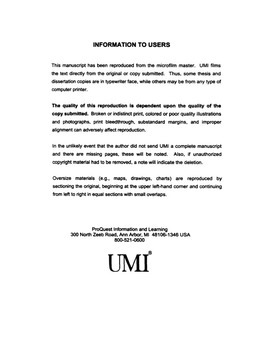| dc.contributor.advisor | Doezema, Ryan E., | en_US |
| dc.contributor.author | Brown, Fred Burton, Ii. | en_US |
| dc.date.accessioned | 2013-08-16T12:18:47Z | |
| dc.date.available | 2013-08-16T12:18:47Z | |
| dc.date.issued | 2002 | en_US |
| dc.identifier.uri | https://hdl.handle.net/11244/519 | |
| dc.description.abstract | This work investigates InSb/AlxIn1- xSb quantum wells through the use of Fourier Transform Infrared (FTIR) Spectroscopy. In addition to briefly examining excitonic transitions in undoped square wells, this work covers a detailed investigation into the dependence of the AlxIn(1-x)Sb band gap on aluminum concentration and temperature. Following this is the determination of the band offset in the InSb/AlxIn1- xSb quantum well system by observing "forbidden" exciton transitions in parabolic quantum wells. It is important to know this value both from an engineering and a theoretical point of view as it can significantly affect the number of electron-hole transitions available. | en_US |
| dc.description.abstract | Another important parameter investigated is the deformation potential. AM and InSb have different lattice constants (AlSb being ∼ 5% smaller). AlxIn1- xSb has a lattice constant between the two, which depends on the aluminum concentration (assuming a linear dependence on Al concentration, Vegard's law applies). With mismatched lattice constants, either the well or the barrier will be strained, depending on how the system is grown. The well is under compressive strain in nearly all of the systems studied in this work, introducing a shift in transition energies compared to unstrained systems. Deformation potential is particularly important in modeling light hole transitions, which are strongly dependent on strain. | en_US |
| dc.description.abstract | The above investigations all involve nominally undoped quantum well systems. When n-type dopants are selectively added to the system the Fermi level can be raised to the point where it begins to fill the conduction subbands. When this occurs, valence to conduction band transitions in the partially filled subbands are shifted to higher energies due to the occupation of lower energy states by the excess electrons. These higher energy transitions occur at the Fermi level and are known as Fermi Edge Singularities (FES). The last set of experiments discussed cover the observation of the Fermi Edge Singularity in modulation doped InSb/AlxIn 1-xSb quantum wells. | en_US |
| dc.format.extent | x, 182 leaves : | en_US |
| dc.subject | Semiconductors. | en_US |
| dc.subject | Quantum wells. | en_US |
| dc.subject | Physics, Condensed Matter. | en_US |
| dc.subject | Indium antimonide crystals. | en_US |
| dc.title | An investigation of the properties of indium antimonide/aluminum(x) indium(1-x) antimonide quantum wells. | en_US |
| dc.type | Thesis | en_US |
| dc.thesis.degree | Ph.D. | en_US |
| dc.thesis.degreeDiscipline | Homer L. Dodge Department of Physics and Astronomy | en_US |
| dc.note | Source: Dissertation Abstracts International, Volume: 63-10, Section: B, page: 4729. | en_US |
| dc.note | Adviser: Ryan E. Doezema. | en_US |
| ou.identifier | (UMI)AAI3067111 | en_US |
| ou.group | College of Arts and Sciences::Homer L. Dodge Department of Physics and Astronomy | |
